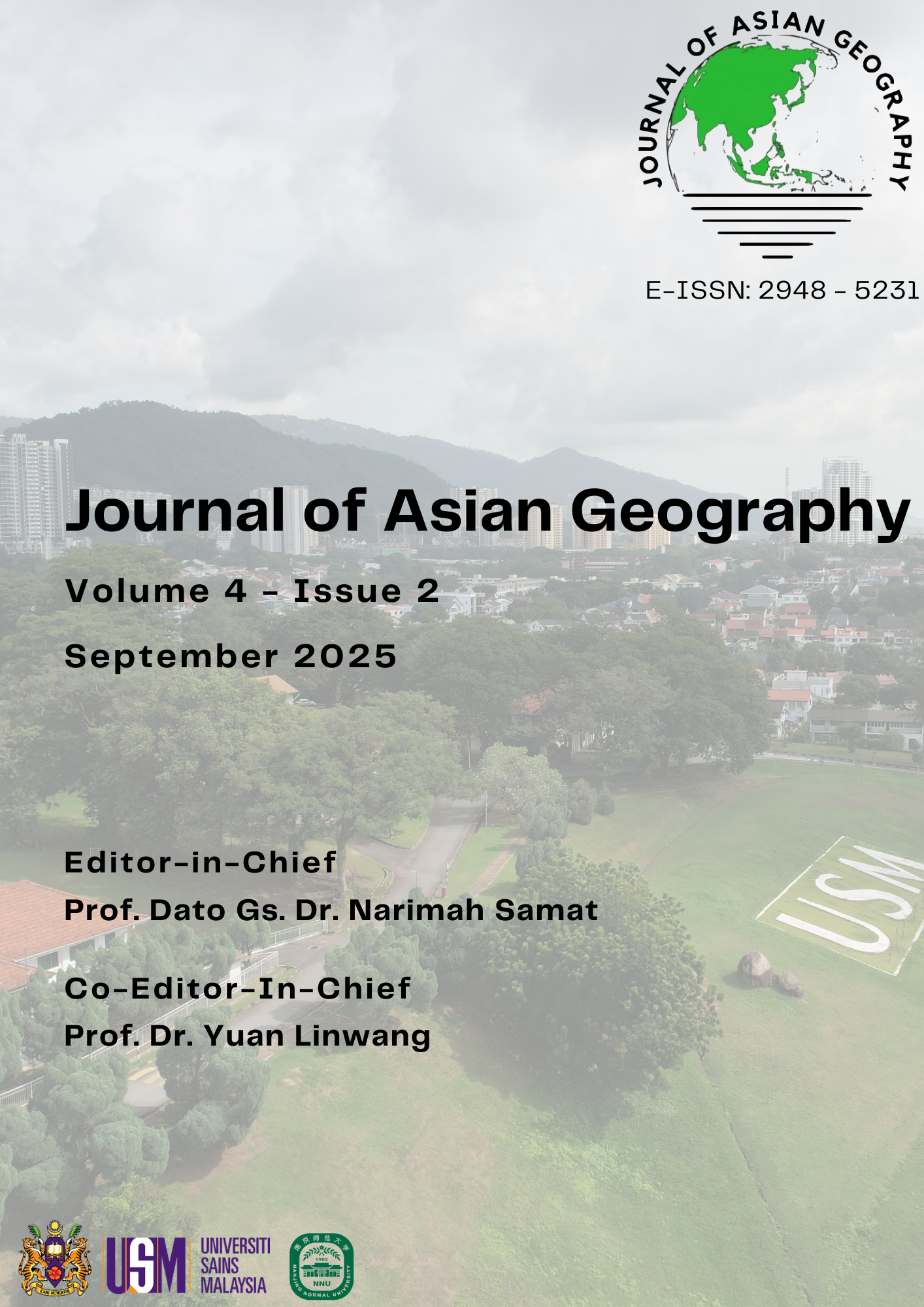From Green to Grey: Exploring Land Cover Transformation and Urban Heat Island Dynamics in Greater Accra, Ghana
DOI:
https://doi.org/10.36777/jag2052.4.2.3Keywords:
Urban Heat Island, Land Cover Change, Land Surface Temperature, Greater Accra, UrbanisationAbstract
Urban heat intensification remains a pressing environmental challenge in rapidly growing African cities, yet limited empirical data exist on its spatio-temporal evolution. This study assessed land surface temperature (LST) and Urban Heat Island (UHI) dynamics in the Greater Accra Region between 2010 and 2024 using multi-temporal Landsat imagery, supervised classification, and geospatial analysis in ArcGIS and ENVI. Land cover changes were quantified, and UHI zones were mapped to evaluate the relationship between urbanisation and thermal patterns. Results revealed that built-up areas expanded by approximately 67,850 ha, while vegetation cover declined by over 45%, leading to a marked intensification of UHI. In 2010, UHI values ranged from 2.55 °C to 15.10 °C, rising sharply to 9.20 °C–25.70 °C by 2024, with high-intensity zones covering more than 70% of the landscape. Town-level analysis further indicated that mean LST values exceeded 34 °C in dense urban cores, such as Accra Central and Madina, compared to values below 27 °C in peri-urban and water-adjacent areas. The persistence of cooling effects near water bodies and green clusters highlights their mitigating influence, although their spatial extent continues to shrink. These findings demonstrate that uncontrolled urban expansion directly amplifies surface heating, posing risks to thermal comfort, energy demand, and public health. The novelty of this research lies in its multi-temporal quantification of UHI escalation over 14 years in Accra, providing robust evidence for integrating vegetation restoration, green roofs, and sustainable urban design into planning. Future studies should refine predictive models and incorporate socio-economic variables to strengthen climate resilience strategies.
Downloads
Published
Issue
Section
License
Copyright (c) 2025 Journal of Asian Geography

This work is licensed under a Creative Commons Attribution 4.0 International License.


